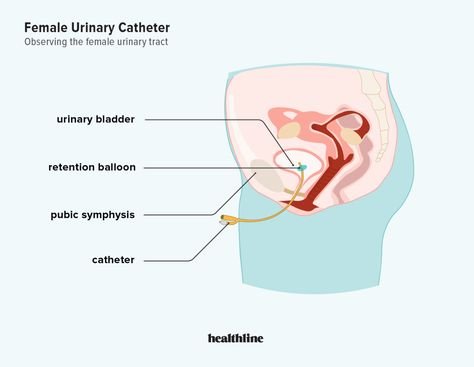Removal of Foley Catheter After Birth - What to Expect
Childbirth brings on many new experiences. If you receive anesthesia, whether it be for a cesarean section, epidural, or spinal, you will most likely have an indwelling catheter placed, often times referred to as a foley or urinary catheter.
What is a foley catheter?
A foley catheter is a small tube made of either latex or silicone that is sterilly inserted up the urethra and placed inside the bladder to drain urine. Once the tip of the tube reaches the bladder, a small “balloon” is blown up with 10cc of sterile fluid to keep it in place. The tube is connected to the patient’s leg with tape/leg securement device/anchor and drains into a bag that collects the urine, in order to monitor the amount and color of the urine.
Why is a foley catheter needed?
Foley catheters are used to keep the bladder drained if anesthesia such as an epidural or spinal is being used. This means that you may have a urine catheter during labor if you get an epidural. This is because the bladder muscle is also affected by the anesthesia and cannot properly drain urine, which could cause complications related to the bladder getting too full. It also reduces the chances of the bladder being nicked during a c-section surgery, since the uterus and bladder are next to each other. Blood in urine after catheter insertion for a c-section may indicate that there is a nick in the bladder. Blood in urine after catheter insertion during labor usually indicates some trauma to the urethra/bladder from the baby’s head, or else that the catheter has come out of the bladder.
How Long Do You Need a Catheter After Birth?
If a foley catheter is placed after an epidural or spinal for a vaginal delivery, the catheter is removed right before the mother starts pushing. If a foley catheter is placed before a c-section, it will remain in place for 12-24 hours after delivery.
There are also some instances where a straight catheter is used instead of a foley catheter to empty the bladder. A straight catheter is also a small tube that is sterilly inserted up the urethra and placed inside the bladder to drain urine, however it is then removed once the bladder is finished draining. This type of catheter is used in instances such as there only being a short amount of time between epidural placement and pushing/delivery, postpartum hemorrhage, forceps or vacuum delivery, or heavy anesthesia that takes a while to wear off after the surgery or delivery. You probably will not experience urinary catheter pain from a straight catheter because they are typically used in urgent situations and when some sort of pain medication is already on board.
Urine catheter during labor
Getting a urine catheter during labor is very common, since most hospital protocols require placement of a foley catheter after an epidural. After the epidural and catheter are placed, sometimes a few things can happen:
Blockage of the catheter tube - This can be from blood, discharge, or the baby’s head, once the head is at a low station and close to second stage of labor
Catheter leakage - This can be caused from pushing while the foley is still in place or blockage of the tube.
Kinking of the tubing - Sometimes this happens from a twisting of the tubing, and sometimes it can be from the tubing being compressed under the patient’s leg.
These are things that your care team will be watching for and will remedy. They can sometimes lead to complications but most of the time can be resolved without issue.
During the birth of my first baby, I had received an epidural during second stage of labor, and it was converted to a spinal in the OR for a c-section.
What to expect after removal of catheter after birth
Foley catheter removal may feel a little uncomfortable or slightly painful. Some feel that it burns or stings. Usually the pain is a little worse if you have swelling from pushing, if you received perineal trauma from a tear or episiotomy, or if you have bruising from a vacuum or forceps delivery. A foley catheter removal is not a sterile procedure. The “balloon” inside the bladder is simply drained by pulling the fluid out through the tube with an empty syringe, and the tube is then pulled out.
Catheter related bladder discomfort
Sometimes, complications may arise from indwelling catheters. The most common side effect is urinary tract infections (UTIs). If you get a UTI after delivery, you will need antibiotics to treat the bacterial infection. However, some other issues after foley catheter removal that can arise are:
Painful urination after catheter removal
Bladder spasms, which feel like cramps in the stomach
Postpartum urinary retention
Urinating after removal of catheter after birth
Though catheter complications aren’t fun, according to the American College of Obstetricians and Gynecologists (ACOG), the benefits of having a catheter during OB anesthesia outweigh the possible risks. To understand why, you can read about it here. After the foley catheter removal, women typically develop an urge to urinate within 4 hours. Medical staff will want you to go within 6 hours. If you aren’t able to go on your own, you may be experiencing postpartum urinary retention.
Summary
Childbirth is a full-body experience that may come with some unexpected twists. Your perineum and pelvic floor endure a lot of stress, which may leave you unable to urinate after childbirth for a short or occasionally extended period of time. If this is the case, keep reading for some tips on how to pee after catheter removal here. You’ve got this momma!



